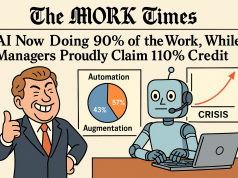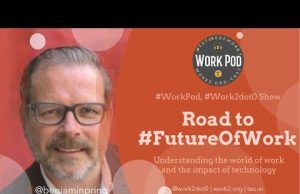[ad_1]
“Why should I train employees for my competitors? They’ll just leave after I invest in their training. I’m smarter than that: I focus on hiring people who are already trained for what we need!”
I am sure my jaw hit the table when I heard that executive’s view of training during a break at a Chamber of Commerce meeting. How could he NOT do everything possible to maintain his biggest asset (and expense) – his workforce and their payroll?
I will admit it was very tempting to ask, “What happens if you don’t train them and they stay? Then what will you have?”
But, before I could say anything, he went on to top himself when a manager sitting next to him asked, “But as fast as technology and knowledge is changing, how do they keep up if you don’t train them?”
“I don’t worry about it. I pay them to stay productive. If they want to keep their jobs by being productive, it’s their responsibility to stay current!”
Unfortunately, his attitude of ‘why-train-them-for-my-competitors’ is fairly common when training is viewed as a unique event that disrupts productivity.
That is why workforce development means so much more than just training. ‘Developing the employee’ means that you are going beyond teaching job skills. You are also developing character, emphasizing values, and shaping attitudes about how they view themselves, their employer, their peers, and their future.
If an employer wisely spends money on maintaining equipment, software, buildings, and customer base to protect their investment in those costly categories, why not also invest (not ‘spend’) in maintaining the expensive workforce that is the source of their corporate income?
The old Army recruiting slogan, “Be All You Can Be” was an earlier way of describing workforce development. It is all about encouraging employees to expand their career horizons. It is saying, “Now that we have taught you how to do the basic job, we want you to figure out how do it more efficiently and increase your value to the company.”
‘Workforce development’ in its best sense means:
- We conduct needs assessments to develop our training curriculum so the employees always support the business mission.
- We do not conduct a training class if there is not a clear and distinct link to a business reason to do it.
- We do not conduct training classes without having specific, behavioral, or objective outcomes defined first.
- We have low tolerance for supervisors who discourage employees from attending valuable training classes.
- We have taught our leaders how to reinforce the skills taught in any of our courses.
- We view our training function as a valued business partner, not as a cost center.
- Before sending employees to a class, we require leaders to tell us first how they will work with the employee to reinforce the application of it AFTER the training event because we know that training without reinforcement is a waste of resources.
- Before sending employees to a class, we require leaders to review the learning outcomes most associated with the employee’s job, meet with the employee to be sure they learn them, and schedule a post-class opportunity for the employee to share those learning points with other employees in a departmental learning moment. This provides added value to the supervisor for the training.
- Every department has an orientation and training program that insures new hires (or transfers) become as productive as quickly as possible. It isn’t the same program for all departments but one that is tailored to their unique functions within the organization.
- Each employee can explain the difference between being ‘productive’ and simply ‘busy.’
- We have a program to develop leadership skills in our current supervisors and managers as well as a program to identify and develop future leaders.
- We know how to measure and manage performance in all job function so employees are assured that their work products are measurable and they are fairly compensated.
- We know how to develop and apply fair and measurable methods for determining “soft skills” performance such as communication, teamwork, and customer service.
- We have skilled employees sharing their knowledge with peers so that every employee becomes a trainer to some extent.
- We have a ‘measurement culture’ that is so focused on performance skills that diversity-related issues almost never come up.
- We teach employees to examine their work processes for opportunities to reduce cycle time, waste, or inefficiency.
- Each employee can explain how his/her job supports the mission of the employer.
- We have a performance assessment process that managers use as a tool to manage performance and employees see as a means of managing their self-development.
- Employees are self-directed because their leaders have done an excellent job of communicating expectations and there are processes to provide performance feedback.
- Tardiness, absenteeism, and turnover are very low because employees fell they “get to go to work”, not “have to go to work.”.
- Employees at all levels see real opportunities for self-fulfillment.
- We teach fundamentals of project management to line employees to teach “big picture’ thinking, process improvement fundamentals, and begin the development of future work leaders.
- Our employees would be pleased to tell friends about job openings in our organization they could fill.
- We teach the lowest level of supervisors how to collect and use historic data for measuring production capacity and forecasting potentials for staffing and productivity.
- We teach the lowest level of supervisors how to collect data to prepare a budget and monitor their group’s expenses.
- We teach our leaders at all levels how to lead a multi-generational workforce
- We help our workforce expand their range of skills to broaden their career opportunities instead of just focusing on “moving up”
There are probably many more activities we could add to what “workforce development” means but I am sure you get the sense of how it is so much more than just a training event.
I doubt that executive at the Chamber’s meeting will ever change and I also doubt whether he will be an executive much longer. That kind of thinking drives employees away and creates high (and expensive) turnover ratios. I can visualize him being shown the door muttering how you just can’t find good help any more!
[ad_2]
Source by Dick Grimes




























